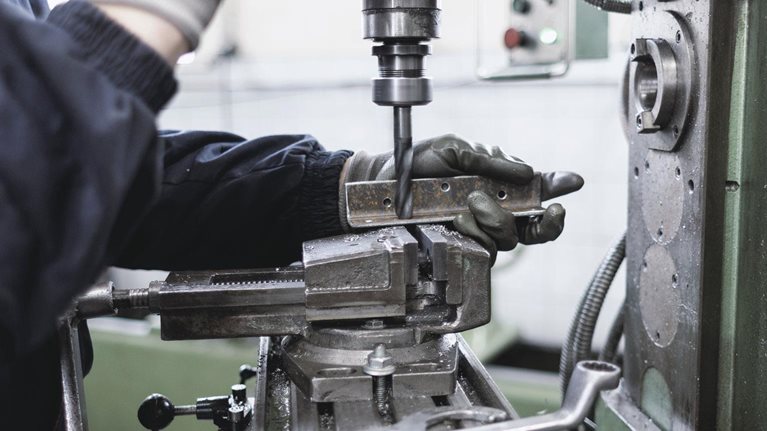Even as the world continues to struggle with the COVID-19 pandemic, economies and markets are planning for what will come after. Central to many of these discussions—among investors, governments, regulators, corporations, and society at large—is an expanded commitment to environmentally sustainable growth. Machinery end markets, including construction, infrastructure, agriculture, manufacturing, mining, and oil and gas, are receiving much of this attention, with their environmental footprints attracting focus from investors, regulators, and other stakeholders.
New environmental initiatives such as the European Green Deal—a set of targets and policy objectives approved by the European Parliament in 2020 and expanded in February 2021—have significant compliance implications for industrial sectors. The European Green Deal aims to make the European economy environmentally sustainable by 2050.1 Interim 2030 targets include, at a minimum, the following goals: a 40 percent cut in greenhouse gas emissions, 32 percent of energy sourced from renewables, and a 32.5 percent increase in energy efficiency.2 Meanwhile, in the United States, an updated climate agenda is taking shape under President Biden, who rejoined the Paris Agreement on his first day in office and convened a 40-nation climate summit in April 2021, among other actions.3
Because machinery and equipment play a central role in industrial operations, companies across the value chain are being called upon to help meet the sustainability expectations of their customers. This has pushed the transition to greener and cleaner energy sources to the forefront of their discussions. Some machinery industry CEOs have further advocated for this sustainability agenda, for example, by joining the CEO Climate Dialogue, a group of more than two dozen companies and leading environmental nonprofit organizations “committed to advancing climate action and durable federal climate policy in the US Congress.”4
For machinery suppliers, OEMs, dealers and distributors, and customers, transitioning to clean energy is an imperative. The task falls to each company to assess the implications of transitioning for its product and service portfolios, financials, and sourcing and procurement functions, among other areas, and set timelines for how and when to transition. Time is of the essence.
The energy transition challenge
The energy transition poses substantial cost and technology challenges. Much existing machinery relies on mechanical drives powered by carbon-emitting diesel or gasoline. Manufacturers have two primary pathways to consider: continue to use mechanical drives, but with lower-carbon fuels such as hydrogen; or switch to electric drives powered by batteries or fuel cells (Exhibit 1). Because these pathways represent the end points on a continuum, companies may also choose a pathway that lies in between or that varies by equipment type or use case.

The implications of this choice are substantial. The mechanical drive pathway is less disruptive to manufacturers and their supply chains because the manufacturing process will continue to be based on combustion engines (though modified for alternative fuels), hydraulic systems, and well-understood repair and maintenance requirements.
The shift to electric drives, on the other hand, will be much more disruptive. In this pathway, batteries or fuel cells replace engines; e-motors, e-drives, and e-actuators replace hydraulic components in many applications; and aftermarket services shift from maintaining mechanical parts to optimizing electrical drives and power sources.
Shifting to electric drives will have implications across the machinery value chain, ranging from manufacturers of small components such as pumps and valves to OEMs of large, complex machinery including aerial work platforms, excavators, and hauling trucks. For machinery OEMs alone, 10 to 25 percent of their revenues and 30 to 45 percent of their aftermarket revenues may be at stake during the energy transition.
This range will be driven by the mix of machine types and vertical integration of OEMs. For example, according to McKinsey analysis, for aerial work platforms, 15 to 25 percent of machine revenue and 35 to 45 percent of service parts and maintenance revenue is tied to the internal combustion engine (ICE) and associated parts and components. For excavators, by comparison, only 10 to 20 percent of machine revenue and 30 to 40 percent of service parts and maintenance revenue is tied to the ICE and associated parts and components.
Machinery is a very broad sector—construction machinery alone accounts for more than $200 billion in annual revenue globally.5 Assuming aftermarket contributions of 25 to 35 percent of total revenue with applied ranges equivalent to those above, $30 billion to $60 billion in annual revenue of construction machinery OEMs alone could be at stake by shifting from ICE power trains to electric drives.
Each OEM needs to assess its pathway based on two criteria: stakeholder expectations and technical maturity. When both are high, OEMs could react by providing electric drives in equipment such as skid steers and mini excavators, which are frontrunners in electric vehicle (EV) adoption.
In all other cases, OEMs may prefer low-carbon mechanical drives until stakeholder expectations and technical feasibility become high enough to choose electric drives.
The potential electrification of a small excavator illustrates the magnitude of changes for components and subassemblies (Exhibit 2).

Transition implications across the value chain
Historically, the value chain for machinery and equipment has been relatively linear: suppliers ship components to OEMs, OEMs manufacture machines and parts, and dealers and distributors provide machines, parts, and repair services to customers. The energy transition, however, will disrupt some value-chain segments and dramatically alter interactions among them (Exhibit 3).

Customers
Customers are demanding cleaner machines, as well as more sustainable repair and maintenance services from their OEMs and dealers. Although they will need to meet emissions targets, report to regulators, and otherwise ensure compliance, their fundamental industrial operations will remain largely unchanged.
Over time, these more sustainable solutions may prove to be economically advantageous. Already, in certain continuous operation use cases for heavy-duty machinery (for example, a 24/7 mine), some battery electric vehicles (BEVs) have achieved or exceeded total cost of ownership (TCO) parity with ICEs, according to McKinsey’s TCO model. This modeling suggests intermittent operation use cases for light-duty machinery (for example, construction) will achieve parity within a 2023 time frame (Exhibit 4).

Distributors and dealers
Distributors and dealers are already helping customers meet sustainability targets. Absent OEM solutions, some dealers are retrofitting equipment with electric power trains in Norway, for example, to comply with emission regulations in cities. Along with cost, quality, and machine uptime, enabling customers’ sustainability requirements has become an expansion of distributors’ repair and maintenance operations, covering a need not yet served by OEMs.
Overall, dealer and distributor operations face some disruption from the energy transition. Dealers and repair shops will still be the primary provider of field services, but the volume of service requests will likely change as OEMs rely on over-the-air (OTA) data feeds to manage many updates. Some workflows will also be affected. For example, OEM equipment sensors may reveal potential machinery failures, triggering proactive repairs to avoid equipment downtime.
While wear-and-tear part consumption will likely be reduced, the transition will create new business opportunities for dealers. They could potentially enter the market for charging and refueling infrastructure, given their proximity to the customer and their expertise with the machines, equipment, and applications in the field. Recycle and reuse services for batteries and other electrical equipment are another possibility.
OEMs
It is imperative that OEMs move quickly to develop new products, given the threat of disruption they face from nontraditional competitors, such as startups. They also have a host of trade-offs to consider, including the following:
Primary power sources. The trade-offs regarding electric, hydrogen, hybrid, and other power sources depend on many factors, including power density, output requirements, utilization needs, and the infrastructure available for renewing and refueling, in addition to traditional considerations such as TCO, quality, and reliability.
Component technologies. For each power option selected, the OEM will need to select relevant technologies, such as electric power trains, e-hydraulics, and electric motion control. OEMs have a choice to develop these technologies in-house or source them through partnerships, alliances, or supply agreements. Their decisions about which technologies to control internally should be part of their overall product strategy and should take into account how they wish to differentiate their products.
Platforms. OEMs need to decide which platforms to retrofit (for example, using battery packs in place of counterweights in a traditional platform) and which to develop from scratch for optimal performance, quality, and cost. To develop a new platform, additional time will be required for testing, validation, and regulatory approvals. A two-stage approach may also be viable by first retrofitting equipment, then tackling new platforms to meet the customers’ timelines and preempt competitive threats from disruptors. This two-stage model is most appropriate in use cases in which the end-state technology is still accelerating in performance and cost.
Aftermarket impact. Additionally, OEMs will need to consider the impact of the energy transition on their aftermarket businesses. According to a McKinsey simulation of TCO, demand for mechanical parts may drop by as much as half as they are replaced with electric components. To offset (at least partially) potential revenue losses from aftermarket parts and services, OEMs can explore new revenue streams such as direct-to-customer, performance-optimization services (for example, OTA monitoring and performance management) or expanding rental- and leasing-based offerings, among others. An analysis of the end-to-end life cycle of equipment can help reveal the most lucrative opportunities.
Distribution. Go-to-market trends, such as e-commerce and omnichannel distribution, are further blurring the boundaries of interactions among OEMs, distributors, and customers. As in the automotive industry, machinery customers could demand enhanced product features, including connectivity and advanced human machine interactions (for example, AI-enabled voice recognition) for convenience.
Suppliers
Suppliers are apt to feel the pressure most acutely when the transition to electric power trains triggers a cascade of component redesign and new players enter to exploit the opportunity.
The relative threat to incumbents varies by equipment category. For example, demand for batteries, electric power trains, power electronics, control panels, and wiring harnesses could grow while demand for hydraulics decreases and demand for cabs and tires remains steady. Irrespective of category, incumbents will need to rethink, retool, and reimagine their business strategies, go-to-market models, and product and services portfolios.
Start-ups and disruptors are taking a more targeted approach by providing specific modules and technologies, such as batteries, e-motors, electric drivetrains, battery-charging infrastructure, hydrogen fuel cell systems, and more. This ecosystem is a hotbed for entrepreneurship as well as investment from funds and financial institutions.
Despite the overall disruption, suppliers’ relationships with OEMs will remain largely the same, although each will need new technology infrastructure and capabilities to manage updates via OTA.
CEOs and senior executives across the value chain can approach the energy transition as an opportunity to not only decarbonize the environment but also delight customers with improved convenience and experience. By reimagining their business models, they can position themselves to capture new opportunities, offset revenue losses in aftermarket parts and services, and help customers achieve their sustainability objectives. Over time, they may choose to transform their core businesses as value pools shift, ensuring the long-term viability and growth of their companies.

